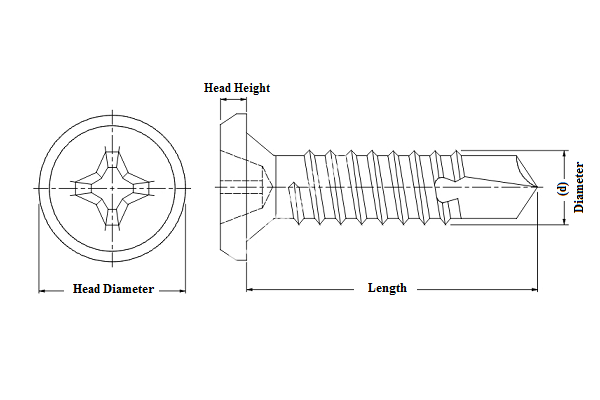Guidelines for Choosing the Right Length of Drywall Screws for Your Project
Understanding Recommended Drywall Screw Length for Optimal Installation
When it comes to drywall installation, the choice of drywall screws plays a crucial role in ensuring a stable and long-lasting finish. One of the most fundamental aspects of using drywall screws is selecting the correct length. The right screw length not only affects the durability of the installation but also impacts the overall appearance of the finished wall. This article serves as a guide to understanding recommended drywall screw lengths and their significance in the installation process.
Importance of Screw Length
Drywall screws are specifically designed to attach drywall sheets to wall studs, ceilings, and other framing materials. The length of the screw is critical because it determines how well the drywall is secured. If a screw is too short, it may not penetrate deep enough to hold the drywall securely, risking sagging or separation over time. Conversely, a screw that is too long can penetrate beyond the frame, leading to structural damage, potential safety issues, and a difficult repair process.
Recommended Screw Lengths
The recommended lengths of drywall screws typically range from 1 inch to 2.5 inches, depending on the thickness of the drywall and the type of application
1. For 1/2 inch Drywall The most common thickness for interior walls, the recommended screw length is usually 1 1/4 inches. This length allows for adequate penetration into the studs while providing a secure hold.
2. For 5/8 inch Drywall Used often for ceilings or areas requiring enhanced fire resistance, the recommended screw length is 1 5/8 inches. This extra length provides the necessary grip while accommodating the thicker material.
recommended drywall screw length service

3. For Double Layered Drywall If you are using two layers of 1/2 inch drywall, a screw length of 2 inches is recommended. This ensures that the screws secure both layers firmly to the studs.
Considerations for Different Applications
When installing drywall ceilings, contractors frequently use longer screws — typically 1 5/8 inches or more — to provide better support, especially when gravity is a factor. Additionally, using screws specifically designed for drywall, with a fine thread and a bugle head, ensures that they sit flush against the surface, preventing damage to the paper layer of the drywall.
Screws should also be spaced appropriately, generally about 12 inches apart along the edges of the drywall and 16 inches apart in the field. This spacing helps distribute weight evenly and minimizes the risk of cracking or bowing.
The Role of Quality
Selecting high-quality screws is just as important as choosing the correct length. A well-made screw will tap easily into the drywall and support significant weight without the risk of stripping. Additionally, corrosion-resistant screws are recommended for areas prone to moisture, as they prevent rust that can weaken the hold over time.
Conclusion
In summary, selecting the appropriate drywall screw length is a fundamental aspect of successful drywall installation. By using the correct length screws, you can enhance the integrity and longevity of your drywall project. Taking into account the thickness of the drywall, the application, and the environment can aid in making the best choice. Always prioritize quality and the adhering to recommended practices for the best possible results. Proper installation not only improves the functionality of your walls but also ensures a smooth, professional finish that can stand the test of time.
-
Top Choices for Plasterboard FixingNewsDec.26,2024
-
The Versatility of Specialty WashersNewsDec.26,2024
-
Secure Your ProjectsNewsDec.26,2024
-
Essential Screws for Chipboard Flooring ProjectsNewsDec.26,2024
-
Choosing the Right Drywall ScrewsNewsDec.26,2024
-
Black Phosphate Screws for Superior PerformanceNewsDec.26,2024
-
The Versatile Choice of Nylon Flat Washers for Your NeedsNewsDec.18,2024










